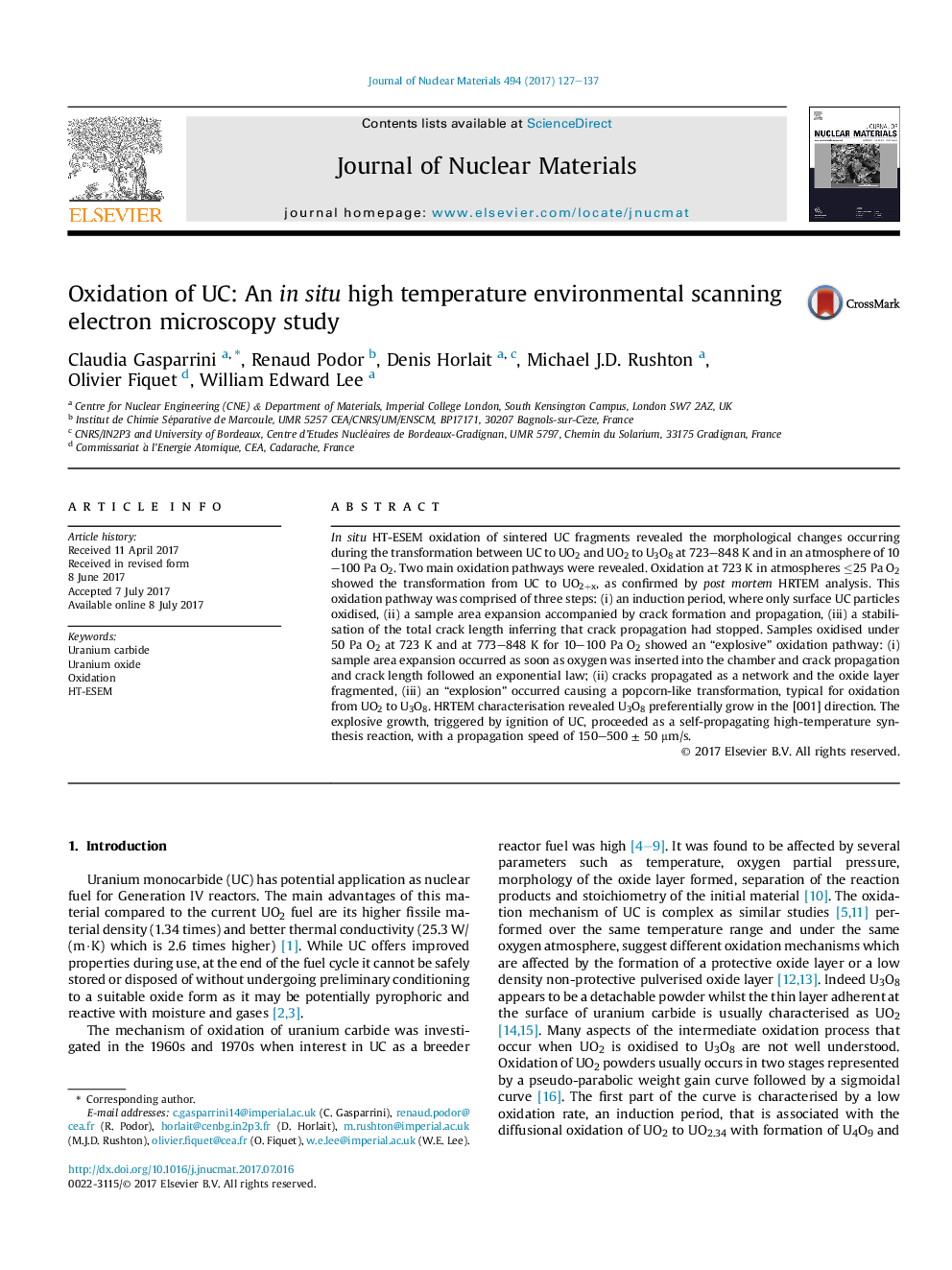| Article ID | Journal | Published Year | Pages | File Type |
|---|---|---|---|---|
| 5454082 | Journal of Nuclear Materials | 2017 | 11 Pages |
Abstract
In situ HT-ESEM oxidation of sintered UC fragments revealed the morphological changes occurring during the transformation between UC to UO2 and UO2 to U3O8 at 723-848 K and in an atmosphere of 10-100 Pa O2. Two main oxidation pathways were revealed. Oxidation at 723 K in atmospheres â¤25 Pa O2 showed the transformation from UC to UO2+x, as confirmed by post mortem HRTEM analysis. This oxidation pathway was comprised of three steps: (i) an induction period, where only surface UC particles oxidised, (ii) a sample area expansion accompanied by crack formation and propagation, (iii) a stabilisation of the total crack length inferring that crack propagation had stopped. Samples oxidised under 50 Pa O2 at 723 K and at 773-848 K for 10-100 Pa O2 showed an “explosive” oxidation pathway: (i) sample area expansion occurred as soon as oxygen was inserted into the chamber and crack propagation and crack length followed an exponential law; (ii) cracks propagated as a network and the oxide layer fragmented, (iii) an “explosion” occurred causing a popcorn-like transformation, typical for oxidation from UO2 to U3O8. HRTEM characterisation revealed U3O8 preferentially grow in the [001] direction. The explosive growth, triggered by ignition of UC, proceeded as a self-propagating high-temperature synthesis reaction, with a propagation speed of 150-500 ± 50 μm/s.
Related Topics
Physical Sciences and Engineering
Energy
Nuclear Energy and Engineering
Authors
Claudia Gasparrini, Renaud Podor, Denis Horlait, Michael J.D. Rushton, Olivier Fiquet, William Edward Lee,
